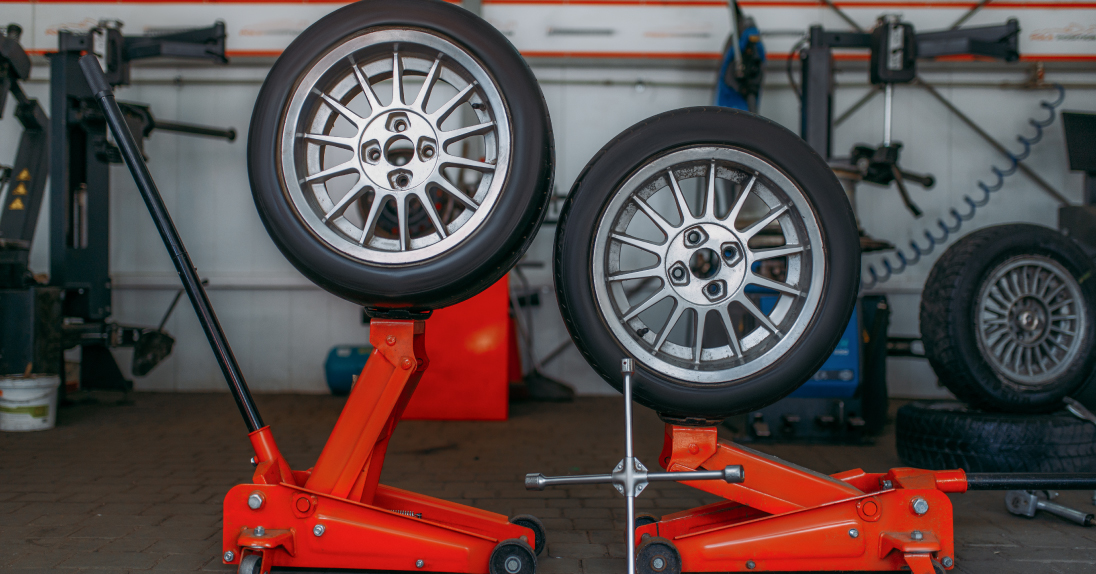Tyre rotation is an essential part of vehicle maintenance that should not be overlooked. Regular rotation of your car's tyres can help prolong the life of your tyres, improve your vehicle's handling and performanace, and save you money on fuel costs. Tyres can wear differently depending on their position on the vehicle. For example, front tyres on a front-wheel drive vehicle may wear more quickly than the rear tyres due to the additional weight of the engine and transmission. By rotating the tyres regularly, you can help ensure that each tyre wears evenly, which can prolong their lifespan and help prevent premature tyre failure.
There are several different tyre rotation patterns, depending on the type of vehicle and tyres. The most common patterns include the forward cross, rearward cross, X pattern, and straight rotation. The appropriate rotation pattern for your vehicle will depend on factors such as the drivetrain, tyre size, and the type of tyres you have.
In this article, we will explain what tyre rotation is, why it is important, and how to do it.

Tyre rotation is the process of moving tyres from one position to another on your vehicle to ensure that they wear evenly. Tyres on different parts of your car will wear at different rates depending on a range of factors, such as the weight distribution of the vehicle, the type of tyres, and driving conditions. Tyre rotation helps to redistribute the wear so that all four tyres wear out evenly. Additionally By rotating the tyres regularly, several benefits can be achieved. The wear is redistributed so that all four tyres wear out evenly, which can help prolong their lifespan, improve the vehicle's handling and performance, and save money on fuel costs.
The most common tyre rotation pattern is moving the front tyres to the back and vice versa. However, the pattern can vary depending on the vehicle's make and model and the type of tyres used. For example, vehicles with directional tyres can only be rotated from front to back, whereas those with non-directional tyres can be rotated in a crisscross pattern.
Tyre rotation is an essential part of vehicle maintenance for several reasons. First and foremost, it helps extend the life of your tyres by ensuring that they wear evenly. Tyres that wear unevenly will have a shorter lifespan, leading to the need for costly replacements sooner than necessary.
Secondly, tyre rotation can improve your vehicle's handling and performance. When tyres are rotated regularly, they wear down evenly, resulting in a more balanced and stable ride. This means that your car will handle better on the road, especially when cornering or braking.
Thirdly, regular tyre rotation can save you money on fuel costs. When your tyres wear down unevenly, they create more rolling resistance, which makes your engine work harder and burn more fuel. By rotating your tyres, you can reduce rolling resistance and improve fuel efficiency, saving you money at the petrol pump.
Finally, tyre rotation is essential for safety reasons. Tyres that wear unevenly can create stability and handling issues, especially in wet or slippery conditions. This can result in reduced traction, poor braking performance, and even accidents. By ensuring that your tyres wear down evenly, you are making your vehicle safer to drive.
The frequency of tyre rotation depends on several factors, including the vehicle's make and model, driving conditions, and the type of tyres used. In general, it is recommended that you rotate your tyres every 5,000 to 8,000 miles, or every six months (this is because tyres can develop flat spots from sitting in the same position for long periods of time.), whichever comes first. However, you should also check your vehicle's owner's manual for specific recommendations.
It is also essential to rotate your tyres before any signs of uneven wear become noticeable. A simple way to check your tyre wear is to look for signs of uneven tread wear, such as bald spots or areas with less tread than others. You can also check the tread depth with a tyre tread depth gauge. If the tread depth varies significantly from one tyre to another, it's time to rotate your tyres.

Tyre rotation is a straightforward process that can be done at home with the right tools and equipment. Here's a step-by-step guide on how to rotate your tyres:
Tyre rotation can be done in several ways, depending on the type of vehicle and the type of tyres being used. In general, it is recommended to rotate tyres every 5,000 to 8,000 miles, although this can vary based on the type of car and the type of driving you do.
The exact rotation pattern will depend on the type of vehicle and the type of tyres being used. In general, tyres should be rotated diagonally or front-to-back. It is also important to follow the manufacturer's recommendations regarding tyre rotation.
In conclusion, tyre rotation is an essential aspect of vehicle maintenance that can help to extend the lifespan of your tyres and improve the performance of your car. By rotating your tyres regularly, you can ensure that they wear down evenly, which can save you money in the long run. If you are unsure how to rotate your tyres, consult your owner's manual or take your car to a professional mechanic.